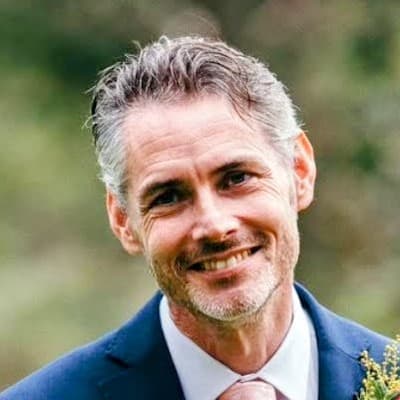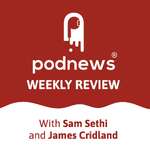
Questions to... YouTube’s Sandy Wilheim

This article is at least a year old
Sandy Wilheim is Head of Podcasts & News YouTube Partnerships in the UK. We interviewed her for the Podnews Weekly Review; we were asked to submit questions in advance. The transcript has been edited for clarity.
So, first, what is a podcast?
Podcasts really offer a unique form of storytelling. What I believe sets them apart from any other format is their long-form unscripted nature, which allows for that closer proximity or intimacy between the creators and their audiences.
As a format podcasts are also evolving. Audiences really want to feel closer to the presenters. They want to be able to visualise the storytelling. They want to feel like they are in the room with their presenter or with their hosts. And on the creator’s side, a lot of them are starting to reimagine their work, not just being heard, but also how it can be seen on YouTube.
Podcasts on YouTube are integrated in a special way rather than just being a piece of audio content. A podcast on YouTube is a playlist, and every episode within that podcast is a video within that playlist. That seamless blend between audio and video allows audiences to consume that podcast in the way that they want to consume it: through audio or video.
So, we’ve continuously worked on enhancing podcast experiences for both audiences and creators alike. For audiences we’ve worked on launching destination pages on YouTube Music and YouTube Main to allow audiences to have a dedicated listening or visual experience when it comes to their podcasting journeys. We’ve launched podcast search cards as well, so that when users search for a podcast, they have the ability to discover podcasts as a search result. And we have continuously tried to find ways to allow audiences to have a seamless experience when it comes to their podcasting journeys on the platform.
That flexibility in consumption is also significant because users have the ability to watch a podcast or just to simply listen, depending on where they are - whether that’s on the go in the background and those experiences also sync up. So you can start somewhere on your mobile phone and you get on the tube, you get on onto your computer. Those experiences all sync up. And what this allows for audiences is to have, ultimately a seamless, uninterrupted journey when it comes to their podcasting journeys
For creators, we’ve also developed tools and features to simplify the delivery of podcasts to the platform, whether that’s true YouTube studios with the uploads of videos or by integrating RSS feeds. And so, according to a recent Edison report, YouTube is the most frequently used service for listening to podcasts in the US. But also importantly, it is one of the most frequent services when it comes to new podcast listeners. So a lot of people are starting their journeys on YouTube. And as YouTube continues to evolve, it is building that multi format ecosystem where podcasts complement other types of content that are on on YouTube already, whether that being shorts or vlogs or livestreams; and audiences start their journeys in so many different places and through those different formats. So tapping into that multi format opportunity helps creators engage with audiences across those different formats and it helps them strengthen their relationship with viewers no matter where or how they choose to consume that type of content.
What we’re also finding from surveys is that young people are comfortable with a lean-back video experience rather than a lean-forward audio podcast. Are you finding that was well?
According to an Edison report, the majority of younger audiences prefer to watch podcasts rather than just listen to them. Increasingly younger audiences are increasing in video first, and they engage more when there is a visual element to their podcasting journeys. That ability to see the hosts or to feel like you are in the room with your presenters allows for that close proximity, and complements the audio that is being offered.
That trend is less pronounced with older age groups who are more accustomed to the more traditional way of consuming audio on your podcast. And I would argue that whilst audio only podcasts remain very popular, the multi-format nature of YouTube is really helping podcasters tap into younger audiences, particularly Gen Z, who prefer video content and also expect multimedia storytelling.
What I think this shift illustrates is how podcasting is evolving as a format.
Does time of day matter as well?
YouTube is a multi-format platform and it offers a robust analytics tool to understand how users are consuming your content, and where they started the journey: how they found that content, who they are, where they are, and at what time of day they are consuming that content.
As you think about a creator’s evolution on the platform, there are different steps into that journey. The first step is defining the objectives that you’ve set yourself to have for the platform. Then it’s about building the audience and deepening the relationship with your audience that are really interested in consuming that content. But then, an essential part of that journey is about looking at data to understand where, and how, and when your users are consuming that content. Data is an essential part of that journey which helps you evolve.
I want to start a podcast on YouTube. Do I have to have a video? Can I just do audio only?
I think a lot of people approach this thinking it’s binary: it’s audio or it’s video. While video can really enhance the podcasting experience, it doesn’t necessarily mean that everybody has to have full video to succeed on the platform. YouTube really offers that wide range of possibilities for creators to combine audio and visual content in ways that works best for them.
So some podcasters upload full length episodes as audio with a static image as an example, but include special behind the scenes as companion pieces to their audio content. Other audio first podcasts create shorts, the most popular clips of the longer form of content. And what they’re trying to do is really reach audiences wherever they are. So your podcast doesn’t need to be on video to have a home on YouTube and to be successful on YouTube.
How important is RSS to YouTube?
RSS is very important. It’s a tool that simplifies delivery of content to the platform.
It’s a very convenient option for many podcasters, but the decision to incorporate video depends on the type of of engagement that podcast creators are seeking with their audiences.
That’s RSS into YouTube. Will YouTube ever let me export RSS out of YouTube?
There’s a lot of the products features that we are working on and we’ll be able to update you as as those goes along.
Our product teams are continuously working on not only enhancing the consumption experience for for audiences, but also to ensure that creators experience on YouTube becomes better and better.
What will happen in the future? I don’t know yet, but I will make sure to update you as soon as possible, as soon as I have answers to that.
I can consume podcasts in YouTube and I can consume podcasts and YouTube Music. Where should I go? Why two, not one?
There is no choice to make in terms of where you want to go first. Users journeys nowadays originate in many different places, whether that is through YouTube Music, through YouTube Main, through YouTube Shorts. What we’ve tried to do with our features and tools that we’ve developed with podcasting is to enable users to have a seamless experience wherever they want. Whether that is audio or video, enabling audio or video on the go in the background, it is about enabling those multiple consumption patterns wherever you are. So they don’t have to make a choice. What we want to do is that ultimately by enhancing that experience across those different places or entry points, we want to continuously work on providing audiences with a seamless, uninterrupted journeys. This is what we’ve done with the tools that we’ve launched.
Importantly, experiences will sync up whether you start on YouTube Music and then you continue on to Main. The aim is for you to pick up where you left off. The end goal is to ensure that audiences have a good experience when it comes to their podcasting journeys on the platform, wherever they are.
What opportunities exist as a podcaster to make money on YouTube? How can I best optimise my revenue return with YouTube?
Once a channel is enabled for monetization, podcasters can access the same monetization options that are available to any creator on on YouTube. Given that podcasts are typically longform content, they naturally provide more opportunities for monetization.
YouTube offers creators multiple revenue streams. There is the traditional ad revenue piece with ads being served against the content, but also there is the option to generate revenue through channel memberships or super channels or merchandise integration with YouTube shopping. These tools allow you to generate revenue, sustain the content offering that you provide, but also scale those operations further.
Additionally, podcasts on YouTube can also include various forms of advertising such as host-read, endorsement or sponsorship messages. And those further enhance the monetization potential of that of those podcasts on the platform.
Thank you so much for taking the time out!
Thank you very much. I really appreciate you talking to us.
Listen
































































































